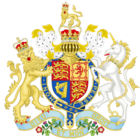Clergy Reserves in Canada Act 1840 facts for kids
| Act of Parliament | |

|
|
| Long title | An Act to provide for the Sale of the Clergy Reserves in the Province of Canada, and for the Distribution of the Proceeds thereof. |
|---|---|
| Citation | 3 & 4 Vict. c. 78 |
| Dates | |
| Royal assent | 7 August 1840 |
The Clergy Reserves in Canada Act 1840 was an important law passed in 1840 by the Parliament of the United Kingdom. Its shorter name is the Clergy Reserves in Canada Act 1840. Its full, longer name was An Act to provide for the Sale of the Clergy Reserves in the Province of Canada, and for the Distribution of the Proceeds thereof. This law was approved during the reign of Queen Victoria.
This Act dealt with a big problem in Canada at the time: the "Clergy Reserves." These were large areas of land set aside for the support of the Protestant clergy (church leaders). For many years, these lands caused a lot of arguments and made it hard for new settlers to develop the land.
Contents
What Were Clergy Reserves?
The Clergy Reserves were lands in British North America, especially in what was then called Upper Canada (now part of Ontario). These lands were set aside in 1791. The idea was to use the money from selling or renting these lands to support the Protestant Church.
However, these lands often sat empty and undeveloped. This made it difficult for farmers to settle in a continuous area. It also led to many arguments about which churches should benefit from the money.
Why Were They a Problem?
- Undeveloped Land: Large sections of land were not being used. This made it hard to build roads or create new communities.
- Fairness: Many people felt it was unfair that only certain churches benefited. Other religious groups wanted a share of the money too.
- Political Arguments: The issue caused a lot of debate in the government of Upper Canada. It was a major source of tension between different groups.
The 1840 Act: A Solution
Before this Act, the local government in Upper Canada tried to pass its own law in 1840 to sell the reserves. However, the British government in London did not approve this local law. Instead, the British Parliament passed its own version, the Clergy Reserves in Canada Act 1840.
This new Act aimed to solve the long-standing problem. It decided how the Clergy Reserves would be sold and how the money would be shared.
The Act made a new plan for the money from selling the reserve lands:
- Half for Main Churches: One half of the money from future sales was set aside for the Anglican Church of Canada and the Church of Scotland. The Anglican Church received two-thirds of this half, and the Church of Scotland received one-third.
- Half for All Others: The other half of the money was to be shared among all other Christian churches. The amount each church received depended on how many followers it had. This was a big change, as it included more religious groups.
Who Managed the Lands?
The job of managing and selling these lands was given to the Crown Lands Department. This was a government department. This change helped to make the process smoother and less controversial. It meant the land sales were handled by a government body, not directly by the churches.
Impact of the Act
The Clergy Reserves in Canada Act 1840 was an important step in Canadian history. It helped to reduce some of the major arguments about land and religion. While it didn't solve all problems immediately, it moved Canada towards a system where land and government were less tied to specific religious groups. This Act was a part of Canada's journey to becoming a more self-governing nation.

